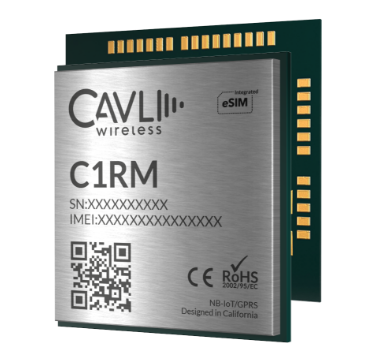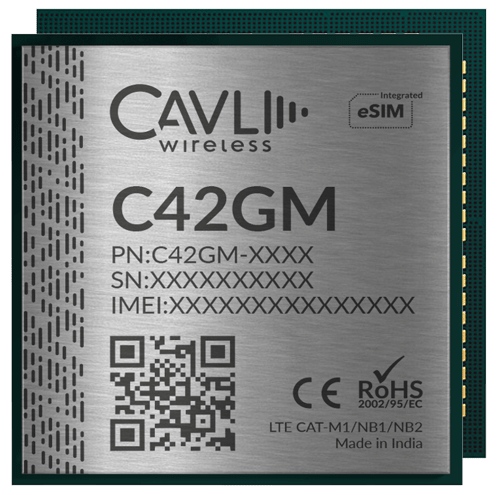Tarun Thomas George
Co-founder, Chief Operating Officer
Cavli Wireless

Conventional methods of farming and livestock management practices have long known to be a manual labor-intensive industry. With modern technology such as the Internet of Things revolutionizing many industrial sectors such as manufacturing, logistics, healthcare, etc., its influence and role in modernizing techniques and practices in the agricultural sector need no introduction.
Traditional farming adheres to overused and outdated practices & equipment for farming and livestock management. This has contributed to low crop yield and low-input husbandry.
The Food and Agricultural Organization (FAO) of the United Nations has predicted a population spike of about 8.5 Bn by 2030 and 9.6 Bn by the year 2050. The rising figures in the years to come would demand food production to increase by 70%. But the scarcity of agricultural lands, limited water resources, and drastically changing climate patterns would pose a challenge to meeting the growing demand for food and nutrient resources in the coming years.
With the advent of IoT in the agricultural sector, several efforts are being set in place to improve the 'Quantity & Quality' aspects of food production and livestock management by turning them connected and intelligent. IoT has achieved this through Smart farming.
Also regarded as the '4.0 Green Revolution', Smart Farming, is an emerging concept that refers to the management of farms by incorporating agricultural methodologies with technology.
The term technology involves the use of sensors, actuators, communication networks, connectivity, location, robotics, and data analytics, etc. to achieve the desired efficiencies of production by keeping costs at bay. Imparting the concepts of IoT in farming and livestock management has provided a better means to control and measure crop growth, irrigation & fertilizer requirements, track and monitor cattle grazing, schedule feeding, remotely monitor cattle health, etc.
IoT-based farming processes involve installing IoT devices in farms that would repetitively collect and process data. The use of sensors would record observational data from 'objects' such as livestock, crops, or the atmosphere. The recorded data would be fed to a cloud-hosted IoT platform through networks. The user through the platform would determine the necessary actions based on the retrieved data.

Radio Frequency technologies such as Bluetooth Low Energy (BLE) and Wi-Fi (short-range technologies) are mostly preferred for indoor monitoring (greenhouses/indoor smart farms), whereas long-range technologies like GPRS and LPWAN are used for monitoring large farms. Mesh technologies like BLE mesh help enhance the range of short-range technologies, making them suitable for devices to remain connected when they aren't in the network's direct range.
Connected nodes (sensors) within a BLE mesh network can transfer indoor field data to an external device with Cellular LPWAN connectivity placed at a distance from the agricultural land to a cellular tower that would then transfer the data to the cloud. Such scenarios require the need for only one device to be actively connected to the network and maintain communication with the cloud, paving the way for efficient networking infrastructure.
The hybrid core network supported with mesh topology performance extends network coverage availability, negating the challenges of low range. Its coexistence with cellular LPWAN technology makes it possible to establish several clusters of connected devices that may not be in close proximity but still connected to cellular LPWAN links.
Agricultural IoT applications such as smart irrigation, precision farming, disease forecasting, cattle health monitoring solutions, etc., are expected to achieve wide traction to meet the rising resource demands in the years to come.
Below are the top six areas of innovation in farming technology demonstrating how IoT has headed towards reshaping the agricultural landscape:

As compared to its traditional counterpart, IoT-enabled weather stations use wireless units to track and provide micro-climate data. Such data can alert farmers on harsh climatic conditions and allow them to take necessary actions in preserving crop health and sustenance beforehand.
Farmers needn't conduct an onsite inspection of crops, feed tanks, ponds, and cattle farms as IoT-enabled monitoring technology allows farmers to keep remote track of resources, usage rates, perform field inspections, and direct and manage delivery truck schedules, etc.


Network-connected collar wearables can track cattle movement and notify farmers of trespassing, thereby preventing cattle loss or theft. Farmers can also monitor eating patterns and health-related activities with a leg- or neck-mounted sensor to efficiently identify and monitor health issues.
With the inception of machine automation, agriculturalists have found new ways to automate their equipment through IoT-powered driverless machines to bring automation to the next level. With lightweight driverless machines, farmers can cut back on labor costs, reduce failure, and minimize machine downtime.


IoT-enabled mobile weather stations provide meteorological data regarding incident response, mobile air traffic control, and command and control. These are quick to set up and can begin to record data for incident decision-making automatically.
This approach uses IoT-based devices to timely and accurately address the needs of cattle or plants with precise nutrient/fertilizer additions, monitor individual animals' well-being, and identify herds falling ill, allowing farmers to take effective and necessary actions.

Cavli, with our solutions in smart connectivity enablement, is working with different stakeholders in Agriculture IoT to ensure they build reliable and scalable alternatives to traditional solutions without much overhead cost.
Cavli's IoT enabling solutions offer reliable and scalable solutions to enhance your farm's productivity by improving:
Solutions to detect crop anomaly avoiding the risk of losing yield
Have better control over the production process & maintain higher standards
Intelligent help automate multiple processes
Cattle health monitoring solutions come in the form of connected wearables that can be mounted around the cattle's neck or by simply mounting it to its leg. Monitoring animal health allows you to keep a better track of your livestock's health and is also a vital step towards preventing animal disease outbreaks.
These devices when powered by Cavli's LTE Cat NB-IoT C1RM cellular IoT module with makes use of embedded wireless sensor devices that collect health parameters

such as temperature, blood oxygen levels, ECG, etc., which are then sent across Cellular Networks to the data cloud where the data is processed in order to depict a clear picture of the animal's health and well-being. The processed data can then be remotely visualized through application software, allowing the farmer to take necessary & timely actions pertaining to cattle health and prevent the chances of illness.
Our NB-IoT/GPRS C1RM module, with a robust build offers durability and longevity for your smart applications. Features such as ultra-low power consumption clubbed with the latest NB-IoT technology for C1RM modules, makes it the ideal power engine to kickstart your animal health solution.

LTE Cat M1/NB1/NB2 C42GM smart cellular IoT modules

Cavli's C42GM smart cellular IoT module comes with an integrated CAN controller and Bluetooth with LTE-M and NB-IoT network compatibility. The smart cellular module which has an extensive healthy battery life of up to 10 years coupled with the Cavli Hubble Global IoT Connectivity and Device Management Platform is the perfect module-platform combination to launch your smart applications in industries like Logistics, Automotive, or Vehicle Tracking systems.
In the coming years, where agriculture and livestock farming eye an ongoing future together with the Internet of Things, an unprecedented level of control and automated decision-making is expected to rise. This could potentially lead to a Third Green Revolution, where an enduring ecosystem of innovation in the agricultural sector will begin to unfold. IoT technologies will enable better food production, management, and traceability. This is expected to be beneficial for the global environment where natural resources like water and nutrients are efficiently and carefully consumed, which will be essential for mankind's continual survival for the years to come.